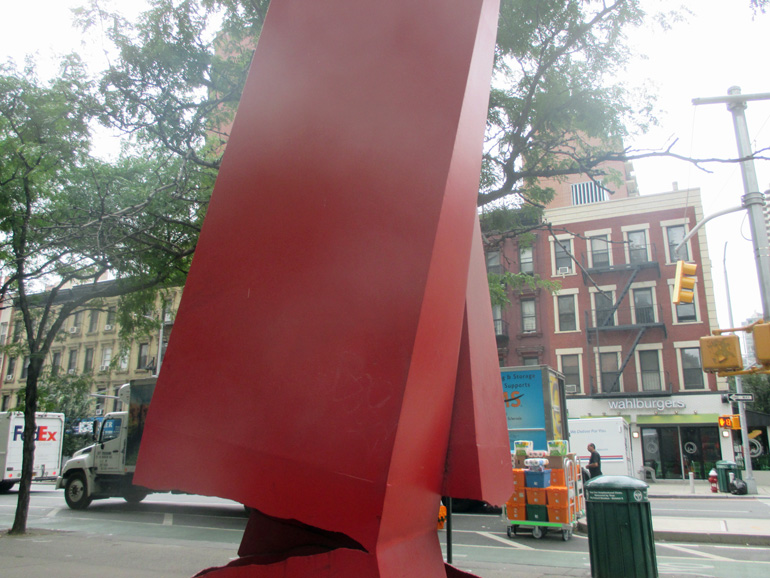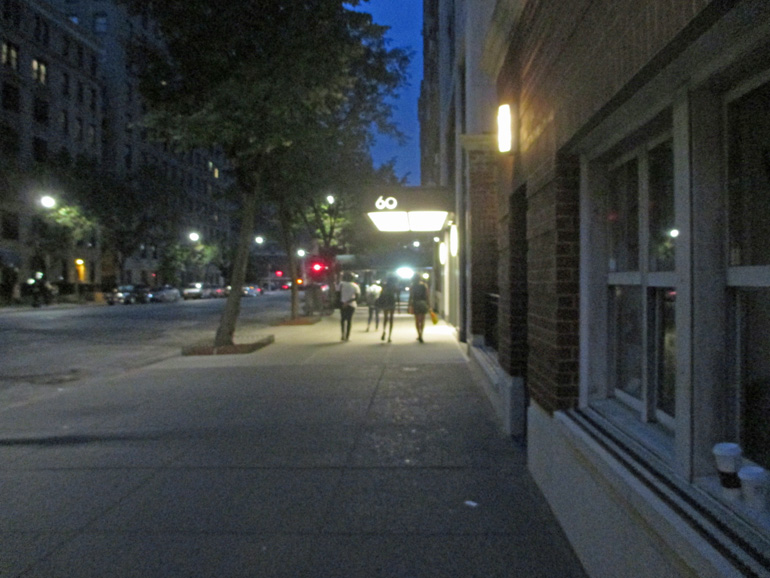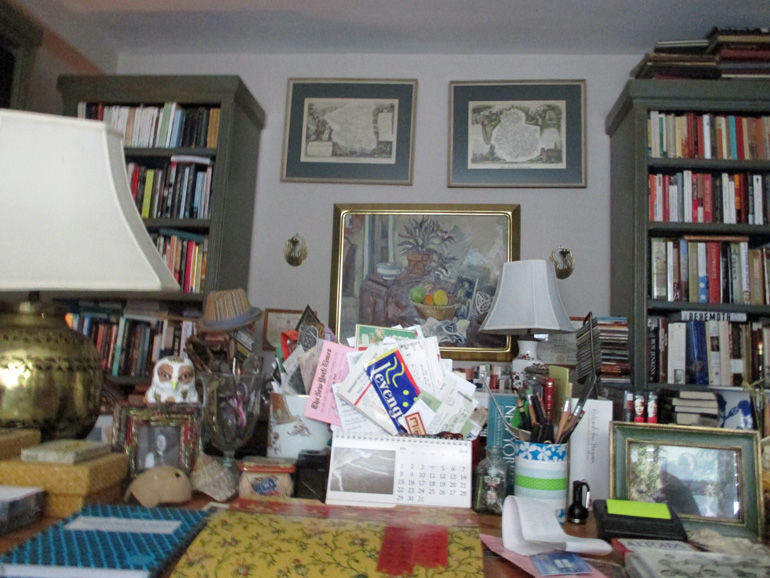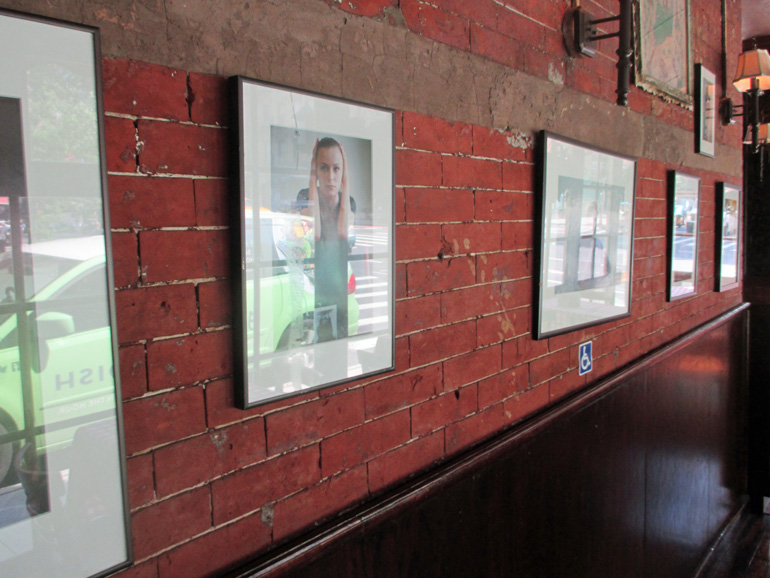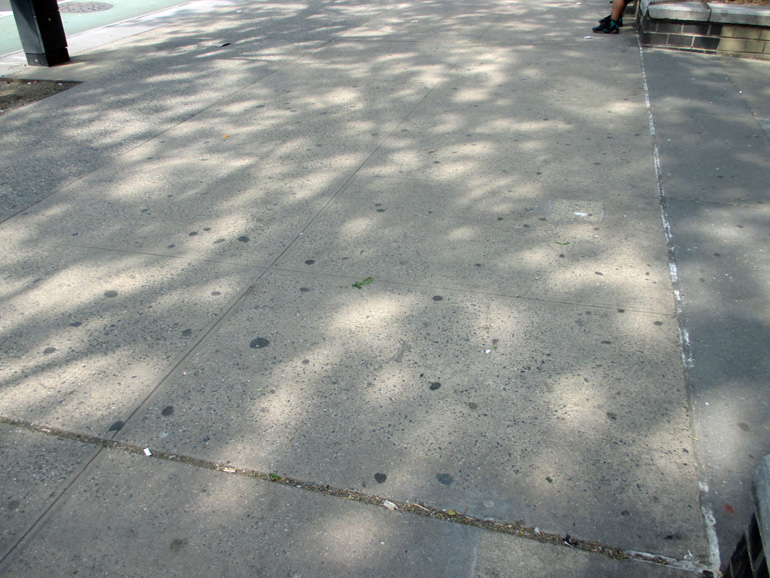12, 13 and 15 June
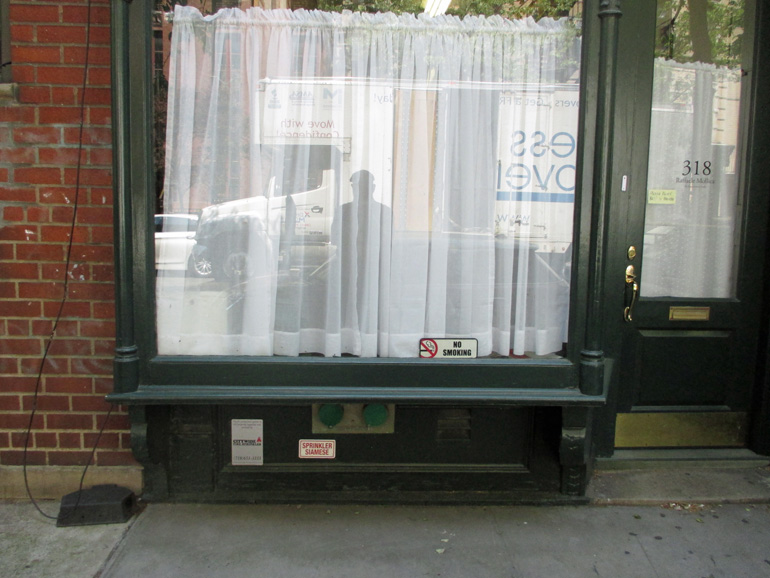
Tuesday 12th
Looking for a book, a few weeks ago, I emptied a triple-decked shelf that I have not yet catalogued. I found what I was looking for, but I left the books that I’d pulled out in stacks all over the room, as a way of forcing myself to note what was where in the course of putting them back. That hasn’t happened yet, and the book room is a mess. But I’ve been doing some unexpected reading. That’s what the books are for, I suppose.
The shelf was at the top of the breakfront bookcase, and in theory it was shared by books on music and on film. (For some reason, most of these books are as hefty as, or even heftier than, history books.) Among the titles disturbed by my search for the score of Mahler’s Third Symphony was David Thomson’s The Whole Equation: A History of Hollywood. It came out at the end of 2004, right when I was beginning to keep a Web log. Is that why I didn’t get very far? (A bookmark was stuck between pages in the first chapter.) Or was it just not what I was expecting — a history of Hollywood. For it isn’t, not really. An historical meditation, perhaps. The Whole Equation assumes a familiarity with the nuts and bolts of movie history that I didn’t have fifteen years ago; even in those days, like most moviegoers, I knew what I liked, which was a lot, but that was about it. I wasn’t much interested in the business of making movies, which seemed to me to be so unlike, so almost at odds with, the movies themselves. That’s part of Thomson’s point, but I wasn’t ready to ponder it.
The title comes from the book that F Scott Fitzgerald hadn’t finished when he died, in 1940, The Last Tycoon. The narrator, a bright young woman roughly modeled on Irene Mayer Selznick, tosses it off as something that maybe only three or four men in Hollywood really understand. David Thomson doesn’t claim to know precisely what the whole equation is, but it seems to connect the many variables of gambling (with a view to winning big) to the psyches of millions of viewers sitting in dark halls, overpowered by colossal images — heads thirty feet high. Both sides of the equation are clouded by dreaming; there is a great deal of slippage between what the parties think they are doing and what they are actually doing. This distributed dreaming has the effect of absolving everyone of responsibility for the movies. No one is responsible for the box-office success or failure of a film. Nobody is responsible for the insidious effects of moviegoing on moral character. No one is responsible for the transformation of an audience into a mob. “Forget it, Jake. It’s Chinatown.”
From the start, “no one in the race could see where it was going.” (44) The two leaders in the race were Thomas Edison and William Dickson in America and the Lumière brothers in France. Edison foresaw a profusion of kinetoscopes, each one controlled by a solitary viewer. The Frenchmen foresaw what we call the movies, with a crowd of people sitting the dark while the images fly before them, inexorably projected by an invisible power. Thomson allows that, in the end, Edison may have proved right, but it is unlikely that anything like the material in my large collection of DVDs would have been produced for a market of kinetoscopes. Right there is a point worth mulling over.
I never cared much for movie theatres. I hated crowded ones, always, especially when the crowds were diverse — which they certainly weren’t at the movie theatre on Kraft Avenue in Bronxville, or in the Engineering Auditorium at Notre Dame. In the former, I saw The King and I twice, the first repeat in my long life with the movies; in the latter, I saw a great many of the prestigious and sophisticated European films that buffs were supposed to have seen. In these venues, audiences behaved politely. Settling in Manhattan, I came to prefer sparsely-attended afternoon shows (with the result that Kathleen and I hardly ever went to the movies together), but even then I had to put up with the occasional whiner. I greeted videotapes with immense and immediate enthusiasm, for I had already learned from Million Dollar Movie that there were pictures that I wanted to see again and again. That I could also see them at will and at home seemed too good to be true, but it wasn’t. I am now content to wait for films to be released on DVD, no matter how loud the roar of approval. The last movie that I saw in the theatre was Get Out, last year — a movie that I quite agree is wasted on a solitary viewer.
By the time I began writing about movies here and at my other, earlier sites, it was fairly clear to my mind that movies were a kind of literature — which is to say that I gave no thought to movies without such literary values as structure and implication — just as serious music is another. Like books, movies and symphonies can be collected and organized and experienced in private. I find that this notional arcade that I have imagined does not accommodate the multi-year series that has become so popular. I collected the first two seasons of Mad Men, for example, but I let them ago, having lost interest in watching the show at about the beginning for the fourth season. While there are a few items in my video library that exceed by a considerable margin the conventional two-hour running time of most movies, almost everything that I have tells its story in the standard frame, a dramatic pulse to which my body as well as my mind have become thoroughly acclimated. When I sit down to watch a video, I know that, in a couple of hours, I’ll be doing something else. Thinking about the video that I’ve just seen will certainly be one of them.
The Whole Equation is like one of those advanced courses that are stamped with “prerequisites” — less-advanced courses that the student must complete first. Thomson’s take on Hollywood history is extremely impressionistic; he omits whatever doesn’t forcibly illuminate his search for the elements of the equation. Alfred Hitchcock, for example,was
a world unto himself in so many ways. Indeed, he hardly seems to have noticed the experience of being in America, beyond enjoying the more sophisticated facilities of the Hollywood studios. He was engaged in his own equation of film and suspense, as if it were a private mathematics.
How true this is! I often think of Hitchcock as a one-man studio, a master of every aspect of filmmaking who outdid the studio factories for sheer control over output. The mathematics was not entirely private, however. Rear Window, Vertigo, and North by Northwest, which Thomson considers to be Hitchcock’s masterpieces, are
reflections on the very art or mathematics that obsesses Hitch. They are about looking, fantasizing, and what happens when the reality and the fantasy clash. Vertigo above all is a morbid analysis of fantasy involvement, and its resolution is not pretty or comforting. These films are something new and more disturbing than even Psycho. For they begin to ask the question: What have movies done to us? (303)
But the paragraph from which I have snipped these passages is the only one, in a book of nearly four hundred pages, in which Hitchcock is more than mentioned. Clearly, the book will be opaque to anyone who hasn’t seen a great many movies. After that, a history such as Thomas Schatz’s The Genius of the System — not that I can think of any “such as” — would be a helpful preliminary.
What have movies done to us? Thomson is pretty sure that they have increased the divorce rate. Not just because actors notoriously marry and remarry — their actual full-time occupation, my mother always insisted — but because every new movie promises a fresh start, a different course of action. And it seems clear to me that intelligent people learn protect themselves from flightiness by weighting the experience of seeing movies with knowledge about how they’re made, how they used to be made, changes in taste over the decades as well as a grasp of developing technology, so as to prevent the surface lightness from kiting them off to the crash of fantasy into reality. Studying film acts as a vaccine. (It can also render unusually powerful movies that rely heavily on cliché rather pathetic and ridiculous, and ultimately painful in an unintended way — I’m thinking of Titanic.) It can also act as fertilizer. Going to Woody Allen’s movies for the jokes is pretty dim; for every spoken line that’s funny there is at least one purely visual gag, often a reference to the sheer magic of the movies (in the Méliès sense), but you won’t catch it if you don’t know your movies. You can’t be dreaming if you want to feel the dream.
Many years ago, on a snowy afternoon in New York, a young woman who was my nephew’s girlfriend at the time and I left the Metropolitan Museum of Art, where we had seen a big Diane Arbus show, and headed east along 82nd Street. I lapsed into a bloviation about the bourgeoisie, which so captivated that I had to be pinched by my companion in the middle of Park Avenue. “Did you see?” she whispered. “That was Woody Allen who just passed us!” Of course I hadn’t seen, but what I did see right away was that we were re-enacting a scene played out in several Allen films, in which an older man purports to instruct a younger woman. Of course, there is usually the hint that the older man harbors other designs, my utter innocence of which meant that we weren’t getting the scene quite right, but all the same, for a brief moment, Park Avenue, complete with snow, filled the interior of a sound stage.
***
Wednesday 13th
The plan was, to take some time off after the New Year, and then to get to work on an overhaul of the writing project. Instead, I relaunched the old Daily Blague, with a new focus (“the incidental housekeeper”). That’s going fairly well — yes, we’ll leave it at that: fairly well. Now, for the writing project.
There were to be three readers. One was an old friend from law school. She liked it, as I expected she would. The two others were former colleagues of Kathleen’s. I never heard back from one of them. The other spent an afternoon with me, going through the MS page by page, rigorously exposing the confusion in the text. I was grateful for his severity, really, but it wasn’t as constructive as I pretended. I wasn’t devastated, but the writing project was. Its shaky foundations gave way under my friend’s criticism. I had always sensed that he regarded me as something of a dilettante and now, without any malice, he effectively wielded the writing project as proof. I thought to myself: Well, it was awfully easy to write.
Of course, I hadn’t known, when I began the writing project, what it was supposed to be about. I complain all the time about that phrase, what the book is about. It’s — vulgar. Is Sigrid Nunez’s new novel, The Friend, “about” her taking a very large dog into her very small apartment, in a building that does not allow dogs, and running the risk of eviction? Of course not. But the dog story is an armature, on which Nunez erects overlapping meditations on men and love and men and art and men and age. Plus, of course, women having to deal with all of the foregoing. The dog story provides occasions for Nunez to come up for air, as it were, with an everyday situation that people who do not teach writing for a living can relate to. But the book is about the former lover, a suicide, whom the narrator addresses throughout The Friend.
I had created an armature for my story, but, like the tale of Apollo in The Friend, it wasn’t inherently interesting. The armature was a series of thematic chapters: schooling, working, growing up in Bronxville, sojourning in Houston, and, finally, settling in Manhattan. For many years, I had thought of writing a book with adoption at the center, as the big deal, but even before I began the writing project, two summers ago, I knew that it wasn’t the big deal. I couldn’t believe for a minute that adoption had wounded or deformed me. Quite aside from its placement in my childhood — at the beginning of the story — it wasn’t any kind of climax. So what was the point of this — this intellectual memoir, I took to calling it; but was it even that? My rigorous critic didn’t think so. I remember his saying at one point, this isn’t thinking, this is blogging. Ouch!
On most days in 2018, I have tended to think that my writing project is a dead thing. But I have never surrendered to this conclusion. If nothing else, the writing project taught me a lot about myself, or at least it raised a lot of questions. Why has it taken me so long to feel that I understand human life, and what does that understanding amount to? I won’t dilate on those issues in this entry, because so many others at this site are devoted to them. I’ll just ask one more question: is there anything specific to the life that I have lived that has predisposed me to reach the particular understanding of the human condition (the human condition of the moment, let me add) that I have settled on? And if the answer to that question is yes: I have become a housekeeper who reads and writes a lot, then so what?
Especially so what when you bear in mind my conviction that intimate personal matters are not revealing.
***
In the immediate aftermath of the writing project’s apparent collapse, I hit on the idea of beginning the rewrite with the portrait of my parents’ marriage. This would be a matter of shifting material that I had already written to the front, and I would set it up as something of a stunt, for it would only be at the end of the portrait that the presence of children would be introduced. I would show, what I had only told, that my parents had a great marriage, or at least a successful partnership, in which children were only so much distracting, unsatisfactory furniture. They would have been better without us — my younger sister and me. They would have been better without us but for the awkwardness of childlessness, very much a black mark in their world. Children were important, nay vital, accessories for an ambitious corporate executive couple. They were necessary handicaps, without which the game of Executive Suite might be too easy to play.
I did say stunt. My parents were not cynical people. But they did not understand human life very well. My father simply wasn’t curious, and my mother not only didn’t see but actively fought against seeing that her view of life was nothing but a heap of sentiment, hardly more substantial than Life According to Hallmark. She was ready and willing to do and to feel all the right things. And I don’t think that she ever felt let down by her ideals. She felt — she often said so — let down by me.
My portrait of the marriage would begin with the wedding album, with a book of photographs taken on Valentine’s Day, 1942. I would treat the album as documentary evidence, from which to extrapolate comments about the newlyweds’ families, expectations, ways of life. (I would make oblique use of the fact that no children appear in any of the pictures.) This was a simple thought at the time, last autumn, when I was still shaking a little from the reckoning and planning to set the project aside for a few months. I didn’t have to write anything down; it was easy to remember.
Gradually, however, as the year has ground on, I have come to see that, no matter how eagerly I would read such a portrait, I have no desire to write it — not again. What I’d much rather do is just describe the photographs. I have always liked looking at them, and in fact this was one of the things about me that let my mother down. It was odd. For her, the album was a keepsake, the covers a sort of box that she did not need to open. That the pictures were there, that the day had been memorialized, that was enough. Actual viewing evoked the awkward contingencies of ageing and death, not to mention the outmoded modes. That, of course, is precisely what I liked about the pictures. My uncle, always so boyish even in old age, really was a boy, barely twenty years old. My favorite aunts were so chic! And the flashbulbs revealed my mother’s mother’s bursting corsets, although I was nearly middle-aged before I figured that out. The setting was the only familiar element: the dining room and the ballroom at Siwanoy Country Club had always been familiar to me. And the loot. The last photograph in the album is of my grandmother’s dining table, loaded with wedding presents. I still have a few of the goodies. I used to have more, but it has been years since I stopped holding on to things just because they fell into my lap.
So the upshot is that my parents’ wedding album is not a souvenir. Although it is beginning to fall apart, it belongs to the present, because that is where I am when I look at it. It doesn’t take me back, even if does remind me of long-gone people having a fine old time more than 75 years ago. They don’t seem so strange — I’m 70 myself. What I see is the world I was born into. Now that I have fought my way out of it — but is fighting the right word? — I can see what I was up against. Not the least of which was how appealing it all looked, at least on a good day.
***
Friday 15th
In today’s Times, David Brooks introduces a term that’s new to me, personalism. It’s pretty much what I mean by humanism: a belief in the importance of according to everyone you encounter a life of complex, autonomous dignity. Whether you can behave accordingly is an endless challenge, but at least you have the right idea.
Personalism is a philosophic tendency built on the infinite uniqueness and depth of each person. Over the years people like Walt Whitman, Martin Luther King, William James, Peter Maurin and Wojtyla (who went on to become Pope John Paul II) have called themselves personalists, but the movement is still something of a philosophic nub. It’s not exactly famous.
As the label for a “philosophic nub,” “personalism” has pros and cons. It makes an important point that “humanism” misses, which is that we are all different. All different, but all, as human beings, worthy of the same absolute regard. It does not carry humanism’s train of contradictory religious/anti-religious baggage. In order to preach personalism, however, a bit of antiquarian etymology might be required. Rooted in persona, it is difficult to pin down. And the vulgar notion of personality threatens to cloud the understanding.
But Brooks is certainly right to say that this is what we need right now. Whether you call yourself a humanist or a personalist, calling someone else a “loser” is wrong.
***
Before going to bed last night, I read a New Yorker piece by D T Max about a new Facebook phenomenon called “SKAM Austin.” Skam is the Norwegian word for “shame,” and it is also the name of a public television show whose creator, Julie Andem, was brought to the US by Simon Powell, of American Idol fame, to collaborate with Facebook — Facebook Watch, to be precise, although I have no idea what that is beyond what Max tells me — in presenting a seemingly real-time high school drama, complete with comments and Instagram accounts. The characters in this drama do what high-school students do: they try to bury the fact that they are in school with clods of adolescent personality formation. (Let’s try to remember that “adolescent” means “becoming adult.” It is unhelpful — although I do this all the time — to use the word to describe behavior that is resolutely hostile to the idea of growing up.) According to Max, the show, which materializes in “dropped” episodes — that’s as in “dropped into the timeline” — is addictive, partly because of multiplying interactive ramifications. (Both characters and actual Facebook users post comments.) “SKAM Austin” sounds to me like a jigsaw puzzle. Once you fit two pieces together, you’re hooked. But working on a jigsaw puzzle is quiet, almost meditative. “SKAM Austin” sounds very, very noisy.
Just as I question the virtues of high school as a place for adolescents to spend time in, so I raise my eyebrows at the proposal that adolescence is interesting, or worthy of any kind of attention, especially from adolescents themselves. Until very recently, adolescent eyes were fixed firmly on the future that had been mapped out by fate; even for the privileged, options were not conspicuous. Ever since Enlightenment thinking was addressed to the circumstances of education, in the late Nineteenth Century, the best minds have been curious to find out what young people will do when given a free hand with the widest range of opportunities — only to find that the boys go in for organized brutality while the girls fiddle with eye-liner. Given choices, young people begin at home; instead of learning about the world, they study personal accessories. Before getting to the question of what you would do if you could do anything, the adolescent wants to decide on what kind of a person to be — and I’m not talking about moral fiber. Perhaps it would be better to say that the young person finds it essential to settle on a way of expressing given characteristics — sexual preference, for example. The problem with high school is that it is a cage of adolescents, an artificial hell. One of the reasons for putting adolescents to work in community service is the increased exposure to fully adult possibilities. This is a good thing about the bad old days that we ought to think about reinstating.
So long as genuinely learning about the world, and not just going through the motions, were regarded as a form of community service, as it certainly ought to be, I should have had a much better time in those awful years, with none but the other genuinely curious students in the classroom.
Bon week-end à tous!


